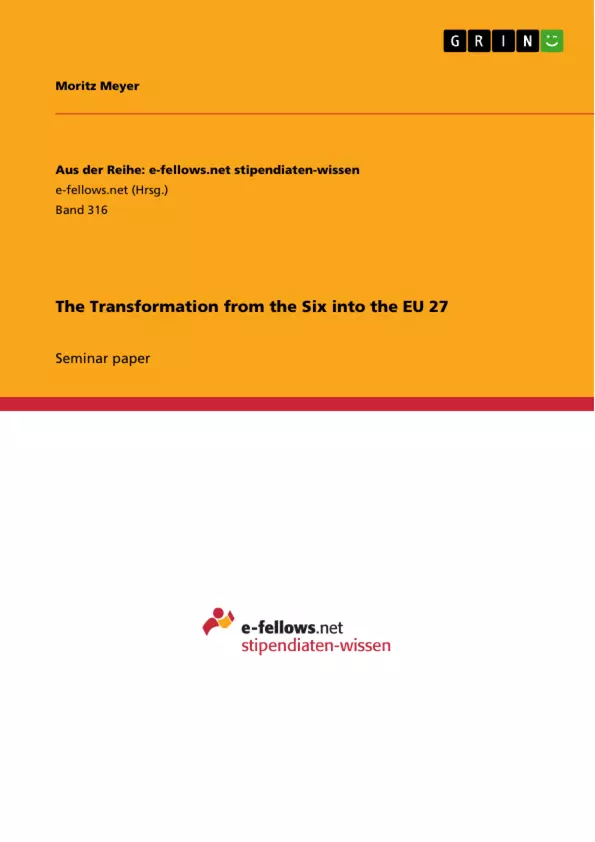This article analyzes the history of European integration from
the end of the Second World War until today. It focuses on
the different enlargement steps and explains why the progressive
enlargement of the European community can be understood as a
mechanism with challenges and responses to internal and external
developments. From this point of view the text has a closer view
on the reasons why specific countries decided to surrender a part
of its national sovereignty to a supranational institution within
the last sixty years.
Inhaltsverzeichnis (Table of Contents)
- Introduction
- The European Coal and Steal Community
- The Treaty of Rome and the European Economic Community
Zielsetzung und Themenschwerpunkte (Objectives and Key Themes)
This article provides a historical analysis of European integration from the post-World War II era to the present day. It focuses on the different enlargement steps of the European Union and explores how these enlargements can be understood as a mechanism responding to internal and external developments. The text delves into the reasons why specific countries chose to cede a portion of their national sovereignty to a supranational institution over the past six decades.
- The impact of the Second World War and the Cold War on European integration
- The role of economic and political factors in driving European integration
- The evolution of the European Union through different stages of enlargement
- The challenges and benefits of surrendering national sovereignty to a supranational institution
- The motivations of individual countries in joining the European Union
Zusammenfassung der Kapitel (Chapter Summaries)
- Introduction: This section provides a historical overview of Europe in the first half of the 20th century, highlighting the impact of world wars, economic depression, and the rise of totalitarian regimes. It emphasizes the need for international cooperation and the role of the European Recovery Program (ERP) as a catalyst for European integration.
- The European Coal and Steel Community: This chapter focuses on the formation of the ECSC in 1950, emphasizing the motivations of France, Germany, and other participating countries. It highlights the role of the ECSC in promoting economic growth and establishing a supranational authority with control over key industries.
- The Treaty of Rome and the European Economic Community: This chapter delves into the establishment of the EEC in 1957, outlining the motivations of the member states and the key provisions of the Treaty of Rome. It discusses the role of the EEC in expanding trade, fostering economic growth, and further integrating European economies.
Schlüsselwörter (Keywords)
This article focuses on the key themes of European integration, economic cooperation, supranational governance, national sovereignty, and the history of the European Union. It examines the motivations of individual countries in joining the European Union and the impact of political and economic factors on the process of integration. It also explores the historical context of the Cold War and the role of American influence in shaping the European landscape.
- Citation du texte
- Moritz Meyer (Auteur), 2006, The Transformation from the Six into the EU 27, Munich, GRIN Verlag, https://www.grin.com/document/182548



